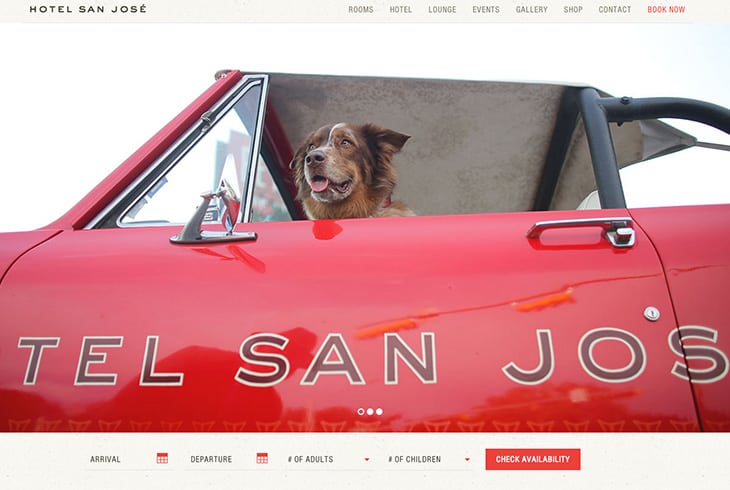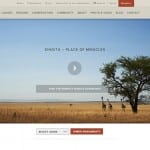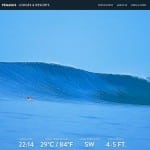Skift Take
Canadian design agency Wallop continues to set the benchmark for hotel websites through intelligent photo/video storytelling and streamlined information architecture.
- Hotel San Jose, Austin
- Singita Safari Lodges, Africa
- Pegasus Lodges, Indonesia
- Donnelly Hospitality Group, Vancouver
- “This Land” video documentary
The Wickaninnish Inn on Vancouver Island won Travel+Leisure’s Best Hotel in North America award in 2002. With the ensuing exposure, the hotel owners wanted a world class website to match the hotel experience, so they hired Stephen Saugestad and his team at Wallop, a digital marketing studio based in Vancouver and Montreal.
The new interactive, visually-driven website was the first of its kind, showcasing the hotel’s spectacular scenery using an interactive widget on the homepage that ultimately set the standard for the industry.
In 2011 and 2012, Singita Safari Lodges’ Grumeti Reserve in Tanzania won T+L’s World’s Best Hotel. Singita’s new website was also designed by Wallop, which is one of five final nominees in the 2013 Pixel Awards travel category.
Presently, Saugestad is leading the digital strategy on The Brando, a 30-room eco-resort that will redefine sustainable luxury travel on what was actor Marlon Brando’s private island in Tahiti.
“Successful hotel website design is about selling an experience and communicating a mindset that is consistent with a visit to the hotel,” says Saugestad. “You’re telling a story by leading the traveler through the discovery and selection process on the web. So we try to build websites that break the traditional mold, and focus on the transformative nature of travel.”
Saugestad says hotel website designers all face the same challenge trying to accommodate the needs from many different hotel executive departments, while communicating all of the facets of the hotel experience. Traditional thinking dating back to the early web dictated cramming as much info above the fold as possible, detailing everything from room types to meeting space layout.
“There are often many different voices in the room, and naturally, they feel the need to push the business goals,” explains Ryan Clarke, director of business development at Wallop. “But the user experience is just as much a priority…. Photography is by far the most important design consideration to facilitate user decision making, combined with an information architecture structured toward simplicity. A simple user experience is just as important as good content.”
Singita’s responsive website, for example, opens with a full page video titled “Singita—Place of Miracles.” The 2:15 minute video opens with CEO Luke Bailes explaining the hotel group’s overarching mission to create resorts that positively impact the environment and local communities. Within a few seconds, the viewer understands the brand story completely, supported by visuals that draw you deeply into the story.
Granted, it’s easier to do that with striking imagery when your hotel is a bucket list destination, but it’s the overall user experience and intuitive design navigation that any hotel can draw inspiration from.
Another Wallop creation, the website for Hotel San Jose in Austin, owned by the trendy Bunkhouse Group, takes visual storytelling to its most simplified and high-impact resolution. The responsive website features a full frame slideshow with beautiful imagery, a fun short story about the “ultramodern” motor court hotel, a simple booking engine, and a tight nav bar up top. And that’s it.
This is not an expensive proposition. The power of the website draws from the quality of the photography and the lack of noise throughout.
Saugestad says Hotel San Jose is about as far and as simple as you can go using a photography-based hotel website.
With that in mind, the company developed Wallop Film to produce and integrate more videos and video backgrounds into the next generation of hotel websites.
“A lot of hotel videos feel like bad commercials, except longer,” says Clarke. “The ROI for good film is that it adds so much more to the storytelling experience, and it’s a direct line to creating more shareable content for customers.”
For an example of what the Wallop team can do with film, visit the “This Land” documentary about a Canadian military patrol in the Arctic. Also check out the high-impact videos produced for Hotel 1000 in Seattle and Casa Madrona in Sausalito on Wallop Film’s Work page.
“We’ve found that hotel videos are especially powerful when the architectural shots blend stylistically with the lifestyle shots,” says Clarke.
Moving forward into 2014, Wallop is developing a responsive booking interface that integrates the browsing/booking processes within the website and across all platforms, with the understanding that simplification ultimately increases conversions.
Clarke says, “That’s part of why OTAs do so well, because they’ve simplified the booking process.”
For more insight into hotel web design trends, read Clarke’s post on the Wallop blog: 14 Web Trends for Luxury Hotels in 2014.
Greg Oates covers hospitality trends and next generation hotels. He has participated in 1,000+ hotel site inspections in over 50 countries.
Have a confidential tip for Skift? Get in touch





